Case study: Restoring heathland and managing visitor flow on Brownsea Island south shore
Reducing the impact of visitors on the wildlife on the south shore of Brownsea Island, restoring heathland and improving the quality of visitor access.
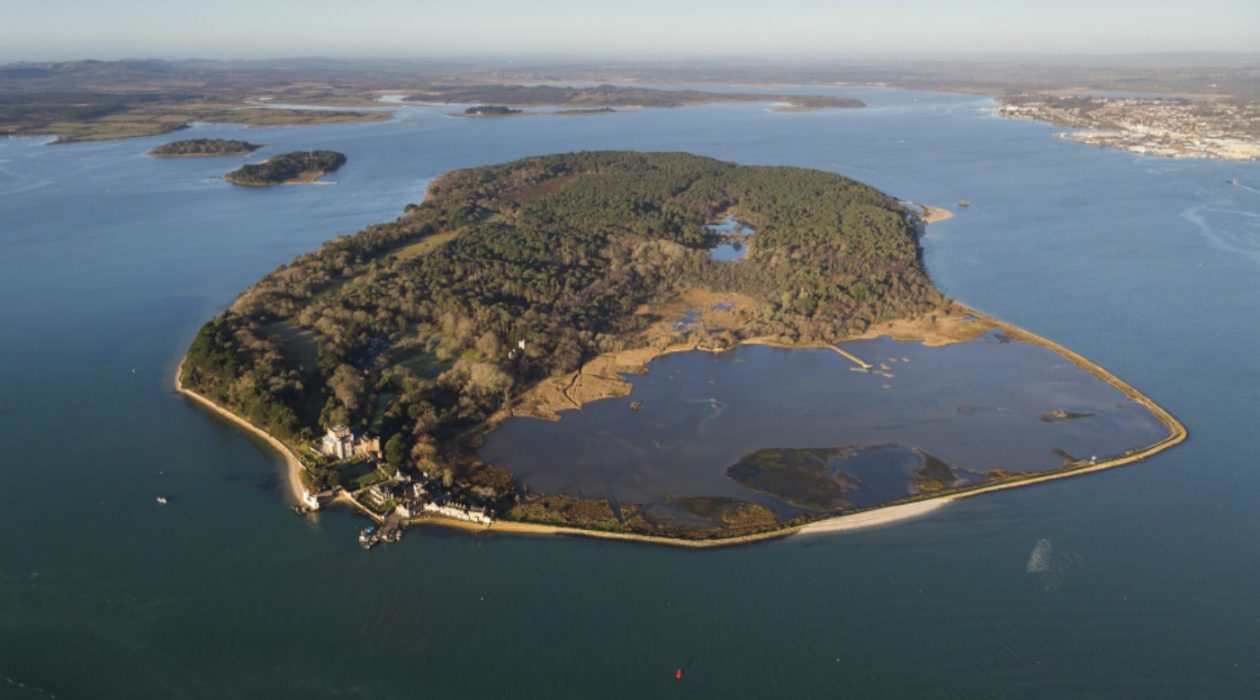
Reducing the impact of visitors on the wildlife on the south shore of Brownsea Island, restoring heathland and improving the quality of visitor access.

The National Trust project lies within the Wytch Farm Landscape and Access Enhancement Fund ‘Intermediate and High Priority’ target areas on Brownsea Island. The project was awarded Wytch Fam support in 2019.
The funding was utilised for all aspects of the project.
Grant awarded: £21,880
Other sources of funding: National Trust, Volunteer time
% of total project costs: 63%
The team undertook an island wide feasibility study around improving visitor experience. This process started with understanding how visitors use the island alongside our significant habitats and wildlife and our future plans to improve the island for biodiversity.
An island wide zonation plan was created showing areas where a possible negative impact on wildlife was highest. This highlighted the island’s coastline was most at risk.
Balancing the National Trust’s objective of making the outdoors accessible to all with preserving our wildlife, the team set out a plan for rationalising how the National Trust at Brownsea could allow our visitors access the coast.
This project meets all three of the fund’s objectives.
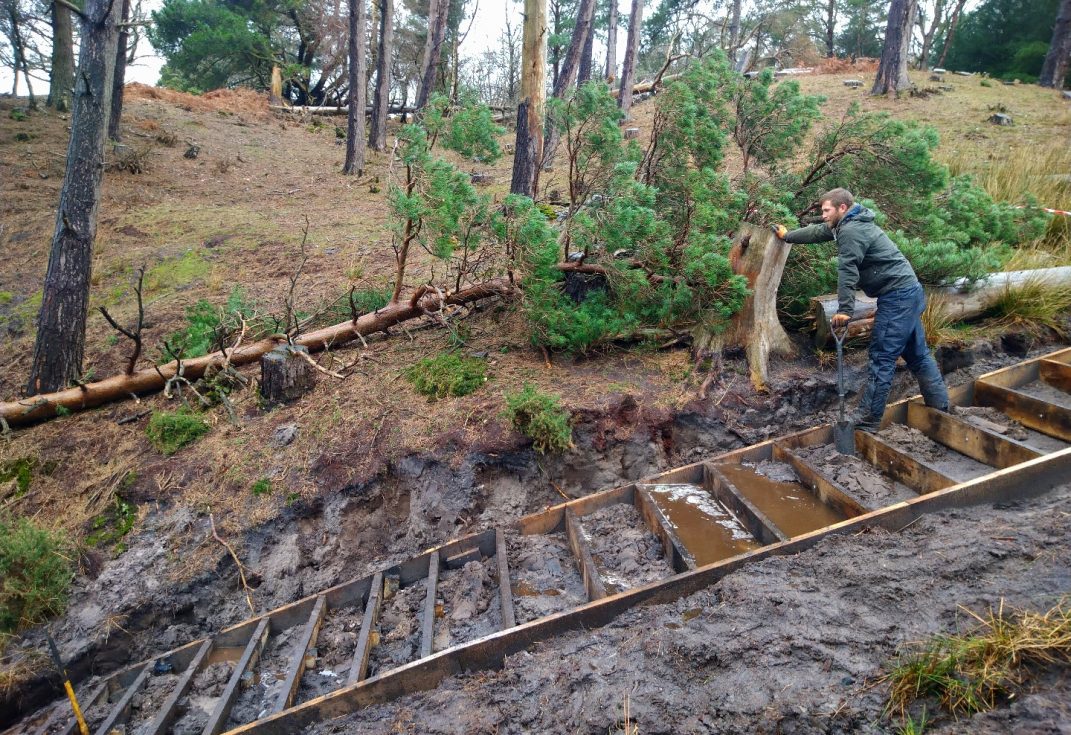
Through the removal of these large structures from the south face of the island the cliff face will be returned to a more naturalised state and heathland will be encouraged to recolonise through management of bracken and Rhododendron and continuation of thinning of tree cover.
Through the restoration of heathland to the south facing cliff face and the removal of visitor routes we will be making more space for wildlife and creating a diverse area of bare ground and heathland.
By removing four visitor routes we can concentrate on improving and maintaining two visitor routes (one to the south shore and one to the West of the island). These will be of a higher quality than the existing routes, encouraging visitors to use these routes instead of making their own desire line paths across heathland restoration areas.
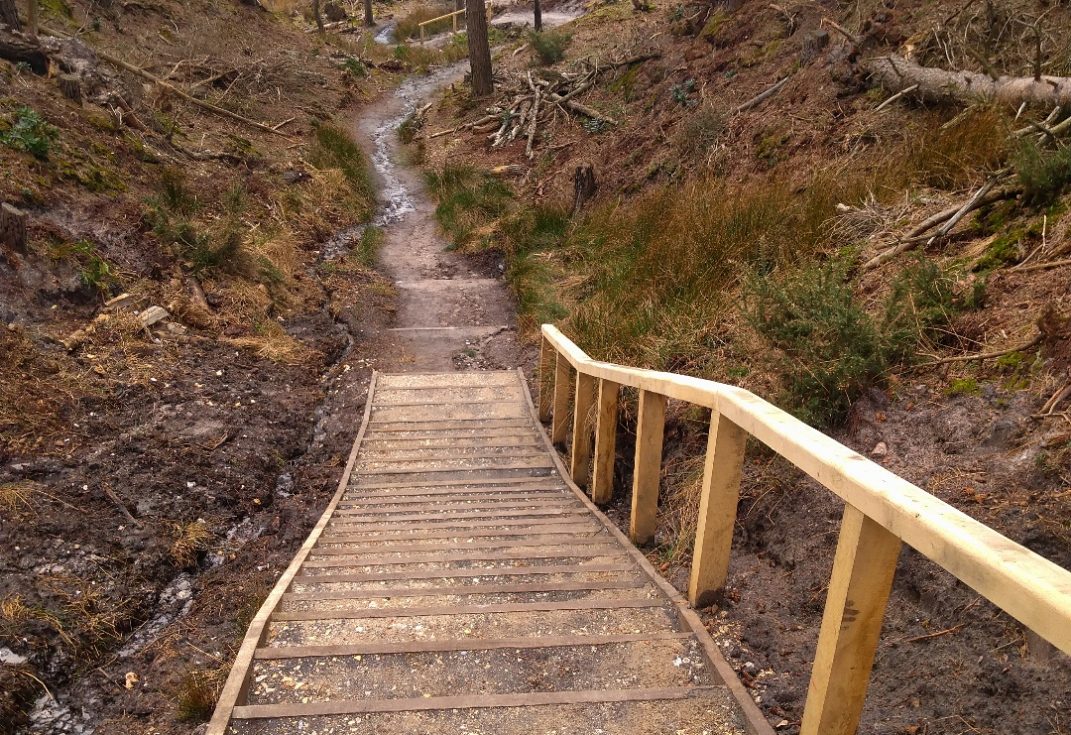
The project started by sharing the projects aims with the island team and large numbers of volunteers to create understanding and backing.
In the next stage, large numbers of volunteers and staff removed the access steps on the island that were not going to be replaced. Due to the steep nature of the slopes many of the materials were stacked on the beach and were removed by the National Trust’s landing craft.
The new island maps were updated by removal of the old access routes.
Honeybun Plant Hire Ltd were hired to carry out the works on Branksea Chine and Pottery Pier Steps. They swiftly removed the old steps and the materials they had bought were of a very high quality.
We then hired Morton and Pattinson to finish the works and were immediately impressed by their work. Their quote was slightly higher than our original, but the quality of work was far higher.
This resulted in the National Trust taking on the small overspend and paying for the barges to deliver the materials. This was offset in part by slightly lower in-kind contribution due to the high numbers of volunteer’s hours we had on the project, meaning our skilled staff needed to contribute less.
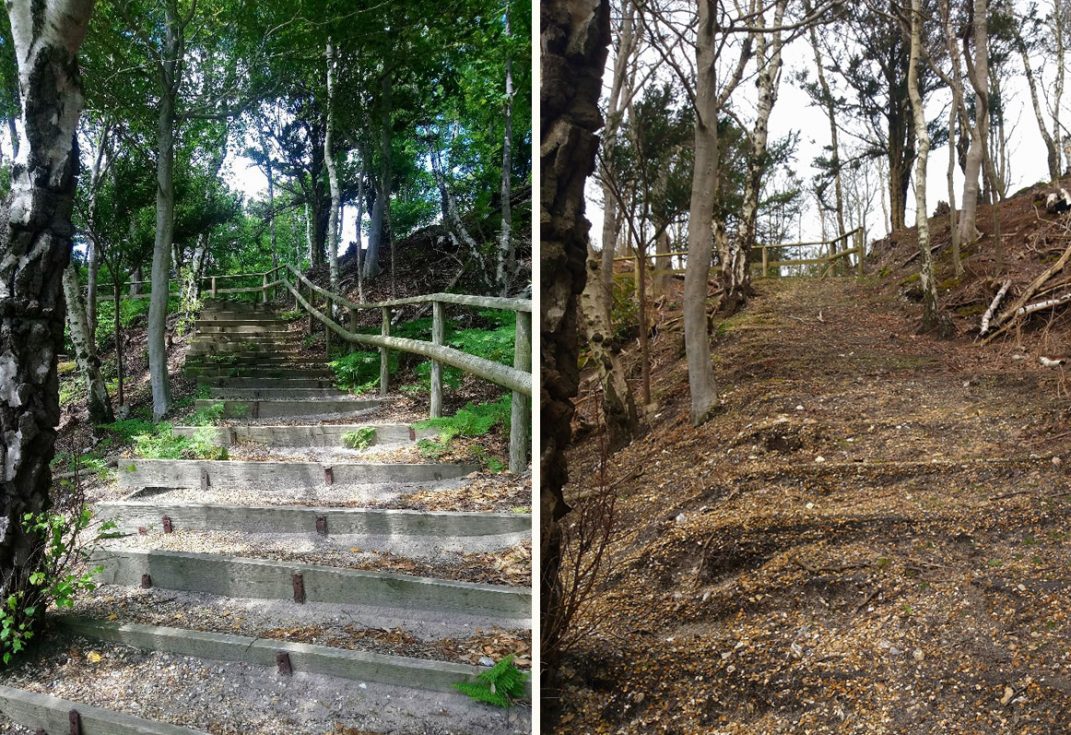
Although the majority of our objectives were all about reducing visitor impact on wildlife one of our main outputs and spend was on the delivery of some new replacement steps at Branksea Chine and Pottery Pier.
If given another chance we would have concentrated more on our first-choice contractors carpentry skills and ability to build these replacement facilities and less on their ability to swiftly remove the old infrastructure.
Our work to inspire and explain the project to our volunteers had the welcome and slightly unexpected result of having higher volunteer hours than expected allowing our staff to get on delivering other more skilled conservation tasks. This time was well spent.
Less access points to the south shore will result in our visitors being concentrated over a much smaller area and targeted closures of the most Westerly and Easterly access routes will create large ‘buffer’ zones between where our visitors can access the coast and the areas of the islands coasts closed to the public.
This will mean more space for wildlife on the coastline of Brownsea Island. The project has delivered our two outputs and our objectives. We are now monitoring visitor movements with GPS units to see whether these objectives are still met in the longer term.
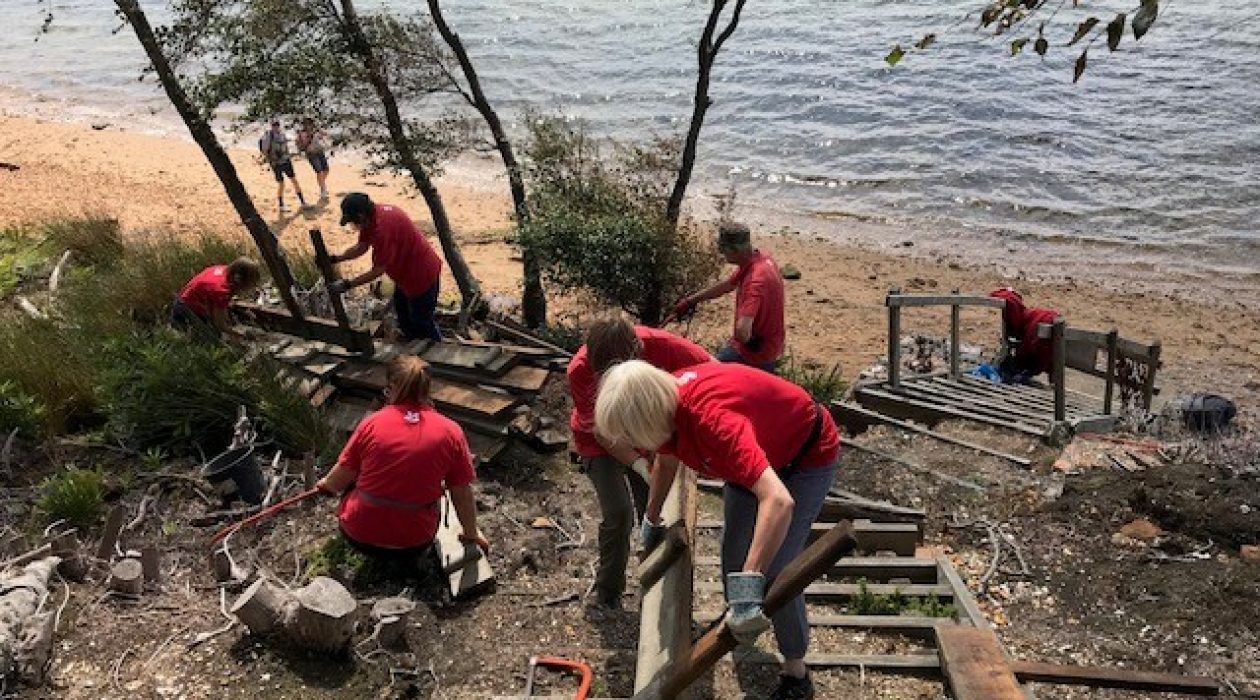
“The work undertaken through this project has had three fold benefit: the landscape character has been improved with old structures removed, biodiversity can thrive through the habitats being restored back to heathland and cliff face sandy micro niches and access of new steps improvements for visitor experience. An excellent example of how the Wytch farm fund is of benefit to our Purbeck Heaths Landscape Character Area”
Caroline Kelly , Wild Purbeck Project Co-ordinator, Dorset AONB